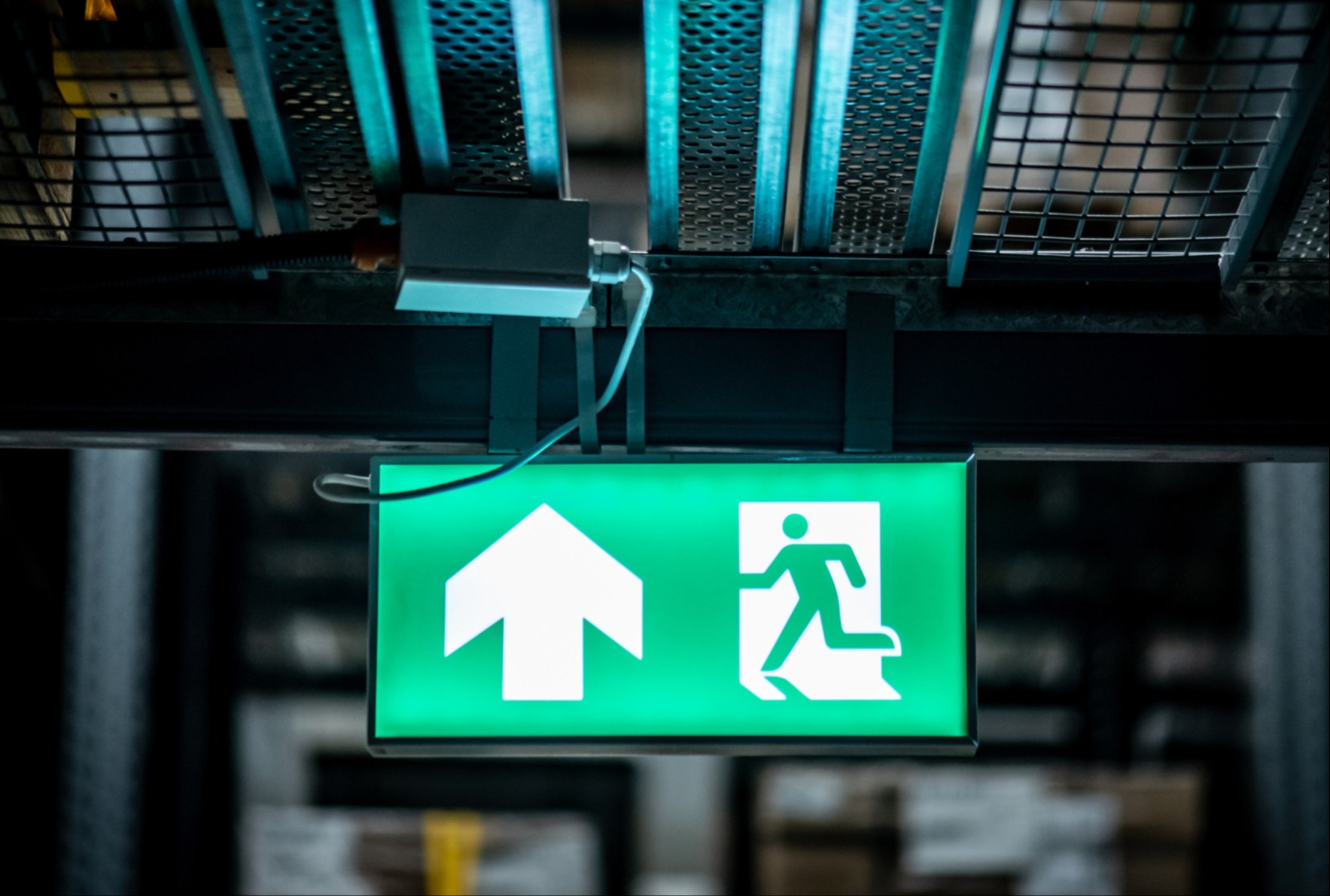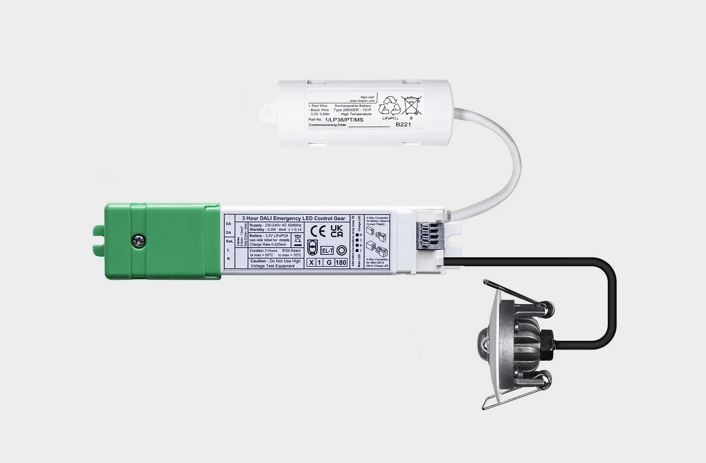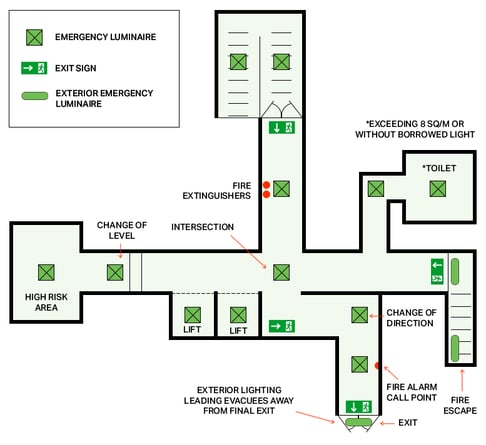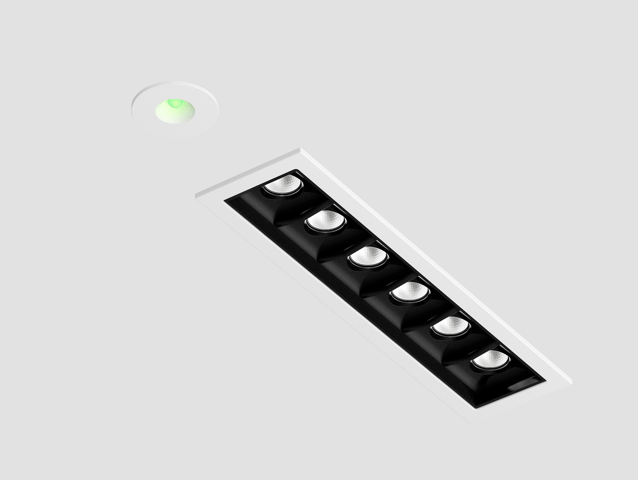Types of Emergency Lighting

To put it simply, an emergency light is a battery-backed or independently powered luminaire that switches on automatically when a facility experiences a power failure. It's purpose is to provide illumination and guidance for a safe exit in low-visibility conditions and as such it is critical for the safety of occupants.
Within this broad definition, there are various types of emergency lighting and this can sometimes cause confusion with specifiers and property owners. The most common way of classifying LED emergency lighting is by operation type and battery system, but there are other factors that affect the types of EM lighting you choose.
To help you understand, here's an easy guide to all the different types of emergency lighting.
Contents. 
Classification by battery system.
The battery system is a crucial component of emergency lighting, as it supplies power to the lights when the normal source is interrupted. There are two types of battery system used for EM lighting - central battery and self-contained.
Central battery
A central battery system works by sending power to a central battery. The central battery then distributes power to the emergency lights that are connected to it. This system is typically used in larger buildings like offices, where a single battery can serve multiple levels or sections. A central battery system can be either maintained or non-maintained, meaning that emergency lights can be either on or off during normal operation.
Self contained
A self-contained battery system works by having a battery inside each emergency light fitting. The battery charges when the normal source is on and provides power to the light when it is off. This system is typically used in smaller buildings or spaces, where individual fixtures can be easily installed and maintained. A self-contained battery system can also be either maintained or non-maintained, depending on the type of fixture.
Classification by operation type.
Emergency lighting can also be defined by operation type, i.e. how the fittings are being operated.
Maintained lighting
Maintained emergency lighting is a luminaire in which the emergency light will be lit continuously, even throughout an event of a power cut. These are most commonly found in public places such as theatres, cinemas, and halls. As these types of buildings usually lack daylight, they require lighting to support safe escape routes and to illuminate signs and fire safety equipment.
Non-maintained lighting
Non-maintained emergency lighting are luminaires which are not normally lit. They are designed to turn on instantly in the event the mains power fails using a battery back-up power source. This should give the emergency lighting a minimum of three hours of power, allowing sufficient time to evacuate safely. These LED emergency luminaires are more popular in the workplace, and are great for lower energy consumption, significantly reducing operating costs.
Classification by location of use.
Depending where they are being used (according to BS EN 1838), the main two types of emergency lighting luminaires are: Emergency escape lighting and Standby lighting.
Emergency escape lighting is to enable safe exit from a location in the event of failure of the normal supply. For more details about escape lighting requirements, please read here.
Standby lighting should be installed when the lighting conditions must remain the same in the event of a power failure, and when the evacuation of occupants would endanger the lives of others. This is most common in hospital operating theatres and some factories.


Classification by style of reporting.
Regular testing and system checks must be carried out to guarantee that any emergency lighting system is fully operational.
Basic
This type would only have green or red indicator, and require manual testing with a key switch. These tend to be used at the back of the house areas or exterior areas. Basic reporting is a perfect option for projects without the budget for reporting, additional cabling, installation and commissioning.
Self-test emergency lighting
Self test emergency lights would usually have an indicator and would report the failure. This technology uses "visual report" so you see the failure immediately. The frequency of the tests depends on the manufacturer. These could be standalone, bulkheads or exit signs.
DALI or DALI -2
The latest version of Dali emergency lighting constantly monitors the system, storing reports of any failures or issues and ensuring that the system is 100 percent healthy for the maximum time possible. DALI 2 reports on the life of the battery, condition of the battery and so much more , ensuring the health of building occupants is assured, and automatic monitoring reduces maintenance costs. The Dali emergency lighting is the most popular option for professional use in office buildings.
Proprietary systems
Most lighting manufacturers are using their own reporting systems. These could be both wireless or wired. Although the advantage of using this type of reporting is more straight forward maintenance, lower initial cost and simpler use, you might be 'locked' in a system, that might not be supported long term.
Classification by integration type.
Emergency lighting is a part of the whole lighting scheme. Emergency lighting luminaires are not renowned for their beautiful design, as the main purpose of emergency lighting are functionality and reliability in emergency situations.
Standalone lighting
These units have actual luminaire bodies. Using standalone emergency lightings comes up a bit more cost effective in comparison to integrated system. This system is easier to maintain and it is also easier to identified a potential problem.
Integrated lighting
Integrated in the actual body of a luminaire, the integrated emergency lighting requires less power. As there is only one installation point, there is also a lot less cabling. The main benefit of integrated emergency lighting is a cleaner, less cluttered look.
What type should you use?
Which type of emergency lighting to use depends on the building type and the actual emergency lighting design, and all systems have their advantages and disadvantages.
We are happy to help you with your emergency lighting, including full design and supply based on your needs.
Book a consultation with one of our Light Engineers to make the process simple from start to finish.
Read Next.
- Emergency Lights - We've Made Specifying Easy
- BS EN 1838 : 2013 - Lighting Applications - Emergency Lighting
- Lighting Guide 7 - Emergency and Standby Lighting
- Getting Smart With Connective Lighting
- Track Lighting: The Guide to Specification
- Back to Insights


